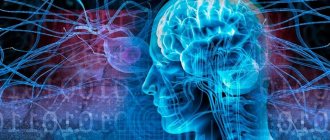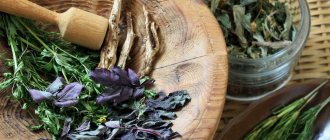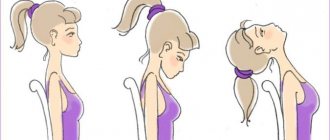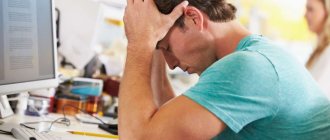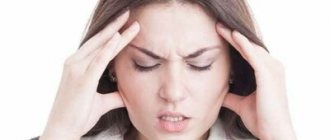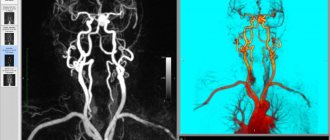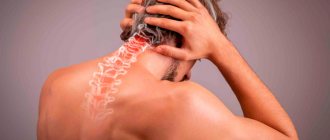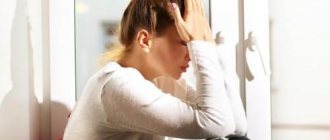Make an appointment by phone: +7 (343) 355-56-57
+7
- About the disease
- Cost of services
- Sign up
- About the disease
- Prices
- Sign up
Migraine is the primary form of headache, the main symptom of which is regularly occurring attacks of pain, mainly in one part of the head.
The pain is pulsating and lasts on average from several hours to three days. Migraine attacks appear against the background of disturbances in vascular tone, which are reversible. But if there is no help for migraine,
there is a risk of developing severe complications that threaten a person’s life.
Migrainous status
In this case, headaches have the nature of painful attacks, are accompanied by neurological symptoms, and last for several days.
Another option for the development of the disease is a migraine attack that lasts for three days and does not go away after taking medications. In this case, headaches are accompanied by:
- vomiting;
- signs of dehydration;
- decreased vision or loss of visual fields;
- apathy;
- convulsive seizures are possible;
- fainting.
Migraine stroke
One of the most severe complications of migraine. The similarity of symptoms with migraine and aura makes the pathology extremely dangerous for human life. It manifests itself as decreased visual acuity, constant headaches (bursting, pulsating sensations, intensified by physical activity), and sensations of numbness in the head. Symptoms last more than an hour, and magnetic resonance imaging reveals structural changes in the brain. In this case, you need to call an ambulance team, which will provide emergency assistance for migraines
and hospitalize you in a hospital.
Oral preparations
Traditional medicine has collected many recipes for healing herbal decoctions, teas and tinctures that can prevent or cure headaches at home. This medicine should be taken with caution, starting with a small dose, to ensure that an allergy to its components does not result.
Herbal teas and infusions
Cooking recipes:
• Tea with clover.
Take a glass of clover decoction daily. It is prepared by pouring boiling water over dried flowers and leaving for 1 hour.
• Decoction with lemon balm.
Pour fresh or dry herbs into boiling water, let it brew, and drink a sip at the initial stage of an attack.
• Linden tea quickly relieves pain. Drink up to 5 glasses a day.
• Infusion of dill seeds.
Pour a glass of boiling water and 1 teaspoon of seeds, leave for 2-3 hours, drink several times a day in small portions.
• Collection of mint, oregano and fireweed tea
Mix equal parts of oregano, mint and fireweed, and brew in boiling water. Take 2-3 tablespoons morning and evening.
• A decoction of viburnum bark helps normalize high blood pressure.
Add 2 tablespoons of crushed dried bark to boiling water, keep in a water bath for half an hour, cool, pass through cheesecloth or a sieve. Drink a tablespoon daily in several doses.
Herbal decoctions are included in the daily menu and consumed instead of regular tea. The result of this treatment will become noticeable after 2-3 months of constant use of decoctions. The herbs in the mixture enhance each other's actions.
Bee products
Consuming honey can prevent an attack or relieve one that has already begun; it has a calming and relaxing effect. Honey enhances the effect of herbal preparations, making their intake more pleasant.
It is recommended to drink half a glass of water during meals, adding a teaspoon of apple cider vinegar and honey.
Royal jelly relieves migraine symptoms and is available in pharmaceutical preparations in the form of tablets and suppositories.
The drug "Apilak" is taken both to relieve an acute attack and to prevent it.
Pollen is infused in boiled water and taken several times a day. Used in complex therapy with herbal decoctions.
Wine infusions
The saturation of biologically active substances makes natural wine a good assistant in the fight against migraines.
Wine decoctions are contraindicated for pregnant women, patients predisposed to alcoholism or peptic ulcers.
To prepare the decoction, make a mixture of fragrant woodruff (20 g), motherwort (20 g), blackberry leaves (30 g), dried cucumber (20 g), thyme (10 g).
Heat 500 ml of white semi-sweet wine to high temperature, add herbs. Let it brew for 4 hours. Take the strained decoction 1 teaspoon 4 times a day. The course lasts 3 weeks.
To prepare a red wine tincture, add 100 g of motherwort to 500 ml of wine. Take in small doses.
Berries
To prevent migraine symptoms, you need to drink juices and teas from viburnum, strawberries and black currants daily. Eating berries during an attack helps stop it.
Black currant is a good antioxidant and helps with oxygen starvation of the brain. As preparations, currants are dried, frozen, and ground with sugar or honey. Tea with currant leaves has beneficial qualities.
Viburnum is a natural source of magnesium and potassium, regulates the condition of blood vessels, and is an antioxidant.
Strawberries contain ascorbic acid and P-active compounds, strengthen blood vessels in the brain. Both the berries themselves, fresh frozen and dried, and the leaves are suitable for consumption.
Contraindications to berry treatment are gastritis and peptic ulcers.
External remedies in the fight against migraine
The presence of contraindications to the use of medications and folk remedies due to pregnancy or allergic reactions is compensated by external methods.
Water treatments
To combat the manifestations of migraines, contrast showers, compresses and medicinal baths are used.
• A hot or contrast shower is the fastest and most affordable remedy at home; it has a beneficial effect on the condition of blood vessels.
• Cold compress on the head and a hot bath on the feet if the face becomes red during an attack. If the face has turned pale, then do the opposite.
• Pour a glass of apple cider vinegar into a bathtub with warm water, take a bath for 15 minutes, and rinse in the shower. A head compress made from an apple bite and cold water is also useful (take in a ratio of 1:4).
• Pour a handful of powder into warm water and stir. Keep your hands and feet in water until the skin turns red.
• To take a honey bath, you need to mix a little honey and liquid soap and pour it into water. Procedure time – 30 minutes.
• A salt or vinegar mixture is effective in treating migraines. In 1 liter of water, dilute 1 tablespoon of salt or vinegar. Moisten the stomach with the resulting solution and allow it to dry without wiping it. After several steps of this procedure, the frequency of headaches will noticeably decrease.
Massage
Daily acupressure is an effective way to prevent the disease. The points are massaged with your fingertips for several minutes.
Active points:
• Tai Yang: in the depression near the temple.
• Pian TouDian: on the middle joint of the ring finger
• Shoi chi: if you bend your arm at the elbow, then the point is on the outer edge of the fold.
When an attack approaches, you need to start doing a head massage.
Using circular movements with your fingertips, knead the scalp, first clockwise, then counterclockwise. Massage your head from the forehead to the back of the head, dividing the hair into several partings and smoothing each part separately. Rub your head in a circular motion along the hairline.
Place the palm of one hand on your forehead and massage the back of your head with the fingers of the other.
Head massage is carried out using pressing, stroking, tapping movements.
Massage is the most acceptable method of getting rid of migraines for pregnant women, since they are limited in taking analgesics and traditional medicine.
An effective remedy for migraines is head massage.
Aromatherapy
Aromatic oils are used by patients of any age, pregnant and nursing mothers in the absence of individual intolerance to the product.
Essential oils of lemon balm, lavender, peppermint, and eucalyptus are used in therapy.
Citrus aromas will save you from nausea.
Juniper, sandalwood, and chamomile oils have a calming effect.
A couple of drops of menthol oil mixed in a glass of water relieves pain.
Migraine symptoms
Migraine pain is throbbing and pressing on one side of the head.
They are predominantly localized in the temple area and behind the eyes. Sometimes pain initially occurs in the back of the head and only over time moves to one part of the head. The localization of pain may change - at first the pain is on one side, but a subsequent attack of pain may be on the opposite side. Often the development of pain is preceded by a deterioration in the general condition (precursors or prodrome): muscle weakness occurs, the person is unable to concentrate. After a migraine attack, you also feel weak and the skin becomes pale.
During headaches, nausea, decreased appetite, and increased sensitivity to light are possible. More intense sensations are observed during physical activity and walking. In women, a migraine attack can trigger menstrual bleeding. The situation worsens while taking hormonal contraceptives.
Migraine classification
In clinical practice, several types of the disease are distinguished:
- panic migraine – manifested by chills, tachycardia, feeling of lack of air, swelling of the soft tissues of the face;
- migraine with aura – before a headache attack there are precursors: disorders of vision, hearing, sensitivity and the musculoskeletal system;
- associated – attacks are accompanied by an aura, neurological symptoms occur before the onset of headaches;
- migraine attack during sleep or in the morning;
- menstrual – migraine attacks are dependent on the menstrual cycle;
- chronic form - attacks occur more than 15 times per month, increasing in intensity.
What is migraine
Migraine is a condition of malaise that is primarily associated with severe headaches. It is provoked by the blood vessels of the brain. As they expand, they compress the nerve endings and create pressure on the brain.
When a person is overcome by a migraine, he cannot lead a full life. Every movement, even slow and smooth, increases the pain syndrome. If migraine attacks recur with a certain frequency, you should immediately consult a neurologist. This specialist will prescribe a series of examinations that will help determine the causes of the pathology.
Migraine treatment
First aid for migraines at home
involves taking painkillers that will help stop a migraine attack and improve the patient’s well-being. However, in the future, preventive treatment is carried out, the effect of which can reduce the frequency of attacks, their duration and intensity, and improve the patient’s quality of life.
First aid for migraines
includes taking the following medications:
- nonsteroidal anti-inflammatory drugs (ibuprofen, diclofenac, indomethacin, ketoprofen);
- triptans have a vasoconstrictor effect, eliminate;
- paracetamol;
- solpadeine (a strong painkiller containing codeine);
- antiemetic drugs.
For persistent migraine attacks (4-6 or more attacks per month), accompanied by a prolonged aura, signs of muscle weakness and numbness, or in the absence of effect after taking analgesics, the following medications are prescribed (in the absence of contraindications):
- beta-blockers – eliminate spasm of pial vessels (located in the brain);
- calcium antagonists (slow calcium channel blockers);
- antiepileptic drugs;
- antidepressants.
Of particular importance is the correction of lifestyle, the elimination of negative factors, and the prevention of the development of migraine attacks. Drug treatment is prescribed by the doctor depending on the type of migraine, the presence of aura and other features.
The diet is adjusted - meat, yeast, marinades, sugar, chocolate, sweets, and alcohol are excluded from the diet. The daily diet should be varied with fresh fruits and vegetables, cottage cheese and fermented milk products. Meals should be balanced, five times a day and in small portions.
To prevent migraine attacks, avoid excessive physical activity, stress and fatigue, lack of sleep or excess (a healthy night's sleep lasts 8 hours). It is recommended to wear sunglasses when going outside. Drug treatment, lifestyle correction, and exclusion of trigger factors can significantly improve the patient’s condition.
You can make an appointment with specialists with extensive clinical experience by calling. (343) 355-56-57
Seizure prevention
The most important step in preventing migraines is prevention. It is difficult to stop an attack once it has started, but learning to track triggers and prevent migraines is quite possible. And this will significantly improve the quality of life.
Try to get enough sleep
Sleep disturbance often serves as a “trigger”. This applies to both too little and too much rest. I recommend sticking to the optimal regime, going to bed and getting up at the set time.
Avoid bright light
Intense artificial lighting can trigger a migraine attack and worsen a headache if it appears. Sensitive people are advised to protect their eyes with sunglasses.
Follow a diet
Balance your diet with proteins, fats, and carbohydrates. Eat fresh fruits and vegetables. Don't forget about healthy Omega-3 fatty acids, which have an anti-inflammatory effect. Beware of preservatives, flavorings, fats and sweets. Be sure to drink enough clean water to avoid dehydration.
Eliminate food triggers
It has been observed that some foods trigger migraines. Note them and avoid them if possible. Here is a partial list of provocateurs:
- sugar,
- artificial sweeteners,
- milk,
- aged cheeses,
- marinated fish,
- cereals with gluten,
- chocolate,
- ice cream,
- red wine,
- beer,
- salty dishes,
- smoked meats
The list included seemingly harmless products. The fact is that many of them contain components that cause deterioration of blood flow in the brain:
- monosodium glutamate,
- histamine,
- sodium nitrite,
- phenylethylamine,
- aspartame.
For example, deli meats, expensive types of cheese, and expired foods often contain tyramine. And sausages, canned food, Chinese street food contain sodium salts.
The best protection against migraines is strengthening the body and increasing stress resistance. Use water treatments, contrast showers, and relaxing techniques. Provide yourself with regular physical activity without overwork, take up swimming or dancing.
